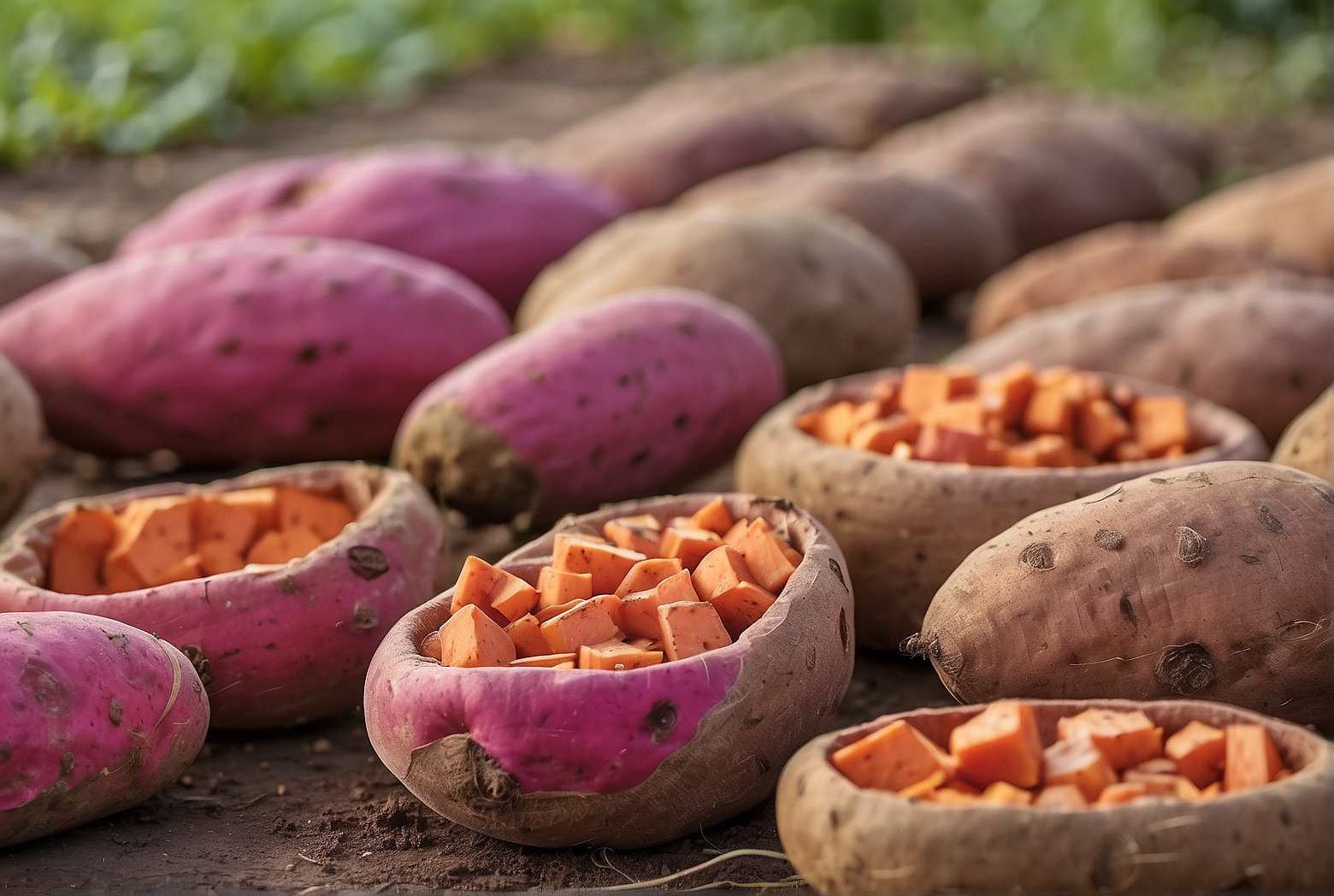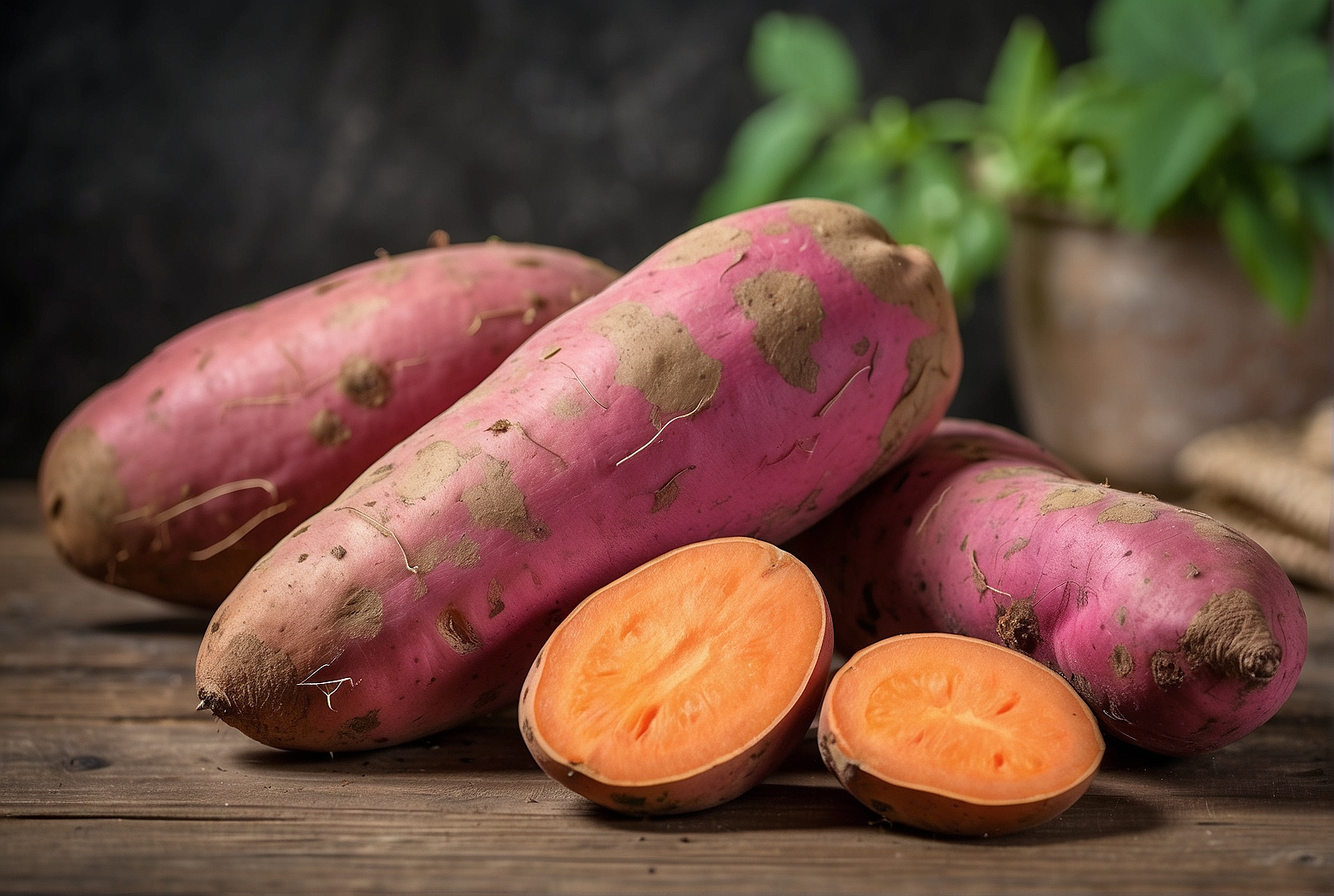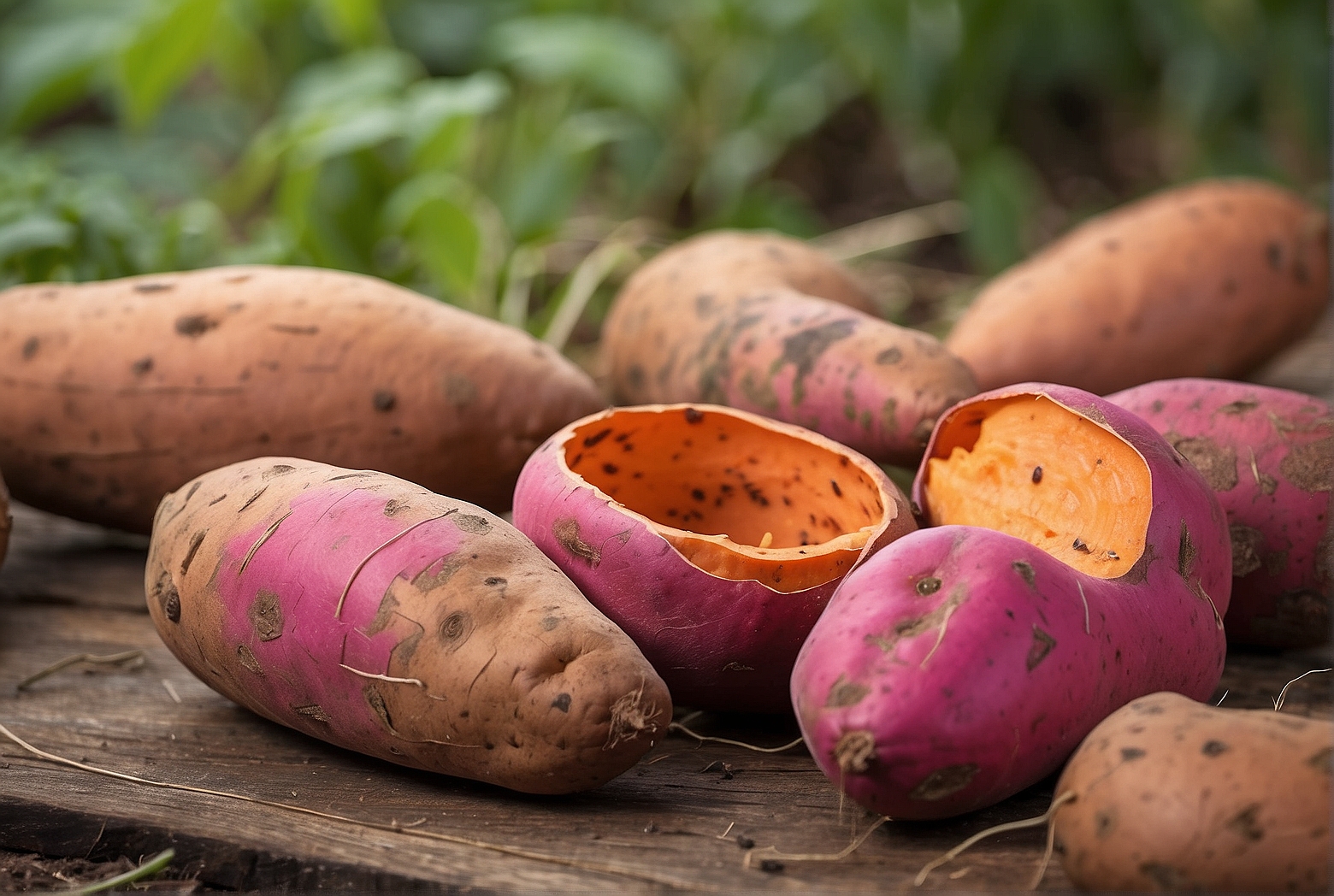Last Updated on March 27, 2024 by Tony Manhart
Imagine having your own garden filled with luscious sweet potatoes, their vibrant orange flesh bursting with flavor. As you embark on your gardening journey, you may find yourself pondering whether these tasty tubers have a determinate or indeterminate growth habit. Well, fear not, my friend! In this article, we will explore the growth habit of sweet potatoes, shedding light on whether they possess a determinate or indeterminate nature. By the end, you’ll be equipped with all the knowledge you need to cultivate these delectable root vegetables with confidence. So, let’s dig in and uncover the secrets of sweet potato growth together!
Growth Habit of Sweet Potatoes
Sweet potatoes are a versatile and delicious root vegetable that is widely grown and enjoyed all over the world. Understanding the growth habit of sweet potatoes is essential for successful cultivation. In this article, we will explore the various aspects of sweet potato growth, including determinate versus indeterminate varieties, vine-like growth patterns, colonizing ability, root system, leaf shape and arrangement, tuber formation, vigor and yield potential, climatic requirements, and suitable growing zones.
Determinant versus Indeterminant
Sweet potatoes can be classified as either determinant or indeterminate, depending on their growth habit. Determinant sweet potato varieties have an upright and bushy growth pattern. Once the vines reach their desired length, they stop growing and focus on producing tubers. This makes determinant varieties suitable for container gardening or limited garden spaces. On the other hand, indeterminate sweet potato varieties have sprawling vines that continue to grow throughout the season. These vines can spread across the ground or climb trellises and fences, covering a larger area. Indeterminate varieties are advantageous if you have ample space for expansion.
Vine-Like Growth Pattern
Sweet potatoes are known for their vigorous and vine-like growth patterns. The vines can reach impressive lengths, sometimes exceeding 10 feet under ideal conditions. The sprawling vines are characterized by long, slender stems that give the plant its distinctive appearance. These vines have an impressive ability to cover ground quickly, making sweet potatoes an excellent choice for ground cover or to provide shade in your garden.

Creeping Stems
The stems of sweet potato plants are creeping in nature, which means they have a tendency to crawl along the ground. As the vines grow, they develop adventitious roots at the nodes, which can take hold of the soil and help anchor the plant. This adaptability enables the plant to propagate via runners, allowing it to colonize soil surfaces and establish a dense ground cover. The creeping stems also provide essential support for the development of tubers and facilitate nutrient uptake from the soil.
Colonizing Ability
One of the fascinating attributes of sweet potatoes is their exceptional colonizing ability. The vines can rapidly spread and cover a significant area, making them highly efficient at utilizing available space. This ability to colonize is particularly advantageous for farmers and gardeners looking to maximize their yields or utilize unused land effectively. As the sweet potato vines colonize an area, they create a dense cover that suppresses weed growth, conserves soil moisture, and helps prevent soil erosion.
Root System
Sweet potatoes have a fibrous root system that is both extensive and efficient at absorbing nutrients and water from the soil. The roots spread horizontally, penetrating the topsoil while also sending down deeper roots to access moisture during dry periods. This robust root system allows sweet potatoes to withstand drought conditions and adapt to different soil types. It serves as a crucial storage organ, storing nutrients for the development of tubers and providing stability to the plant.
Leaf Shape and Arrangement
The leaves of sweet potato plants are an important indicator of their growth habit. The leaves are typically heart-shaped or ovate with distinct lobes. They can vary in size depending on the variety. Sweet potato leaves are alternate in arrangement, meaning they alternate on opposite sides of the stem. The lush foliage not only adds beauty to your garden but also plays a vital role in harnessing sunlight. The leaves are essential in the process of photosynthesis, converting light into energy to fuel plant growth and tuber development.

Tuber Formation
The most sought-after part of the sweet potato plant is the edible tubers. Tuber formation is a critical stage in the growth cycle of sweet potatoes. It occurs underground and is influenced by various factors, including environmental conditions and the length of the growing season. As the vines grow and accumulate carbohydrates through photosynthesis, these compounds are transported to the tuberous roots for storage. Tuber formation typically begins towards the end of the growing season when the vines begin to senesce, signaling the plant to divert energy towards tuber enlargement.
Vigor and Yield Potential
Sweet potato plants are known for their vigor and high yield potential. With optimal growing conditions, sweet potatoes can produce an abundant harvest of nutritious tubers. The vigorous growth and ability of the vines to cover the ground quickly contribute to the plant’s high productivity. Additionally, sweet potatoes possess a significant ability to adapt to different soil types and climate conditions, further enhancing their yield potential. Proper watering, nutrient management, and pest control are essential for maximizing yield.
Climatic Requirements
Sweet potatoes thrive in warm and tropical climates, where temperatures range from 75°F to 90°F (24°C to 32°C). They require a long frost-free growing season of approximately 100 to 150 days. The soil temperature should be consistently above 50°F (10°C) for successful growth. Cool temperatures can stunt plant growth and delay tuber formation. Adequate sunlight is also crucial for sweet potato plants, as they require at least six hours of direct sun exposure daily.
Growing Zones
Sweet potatoes can be grown in a wide range of climates, although the optimal conditions may vary depending on the variety and cultivar. In the United States, sweet potatoes are typically grown in USDA hardiness zones 3 to 11. Zone 3 experiences extremely cold winters, while zone 11 offers year-round warm temperatures. The specific growing zone for sweet potatoes will depend on your location and local climate conditions. Consult your local agricultural extension office or gardening resources for more information on the suitable growing zones in your region.
In conclusion, understanding the growth habit of sweet potatoes is crucial for successful cultivation. Whether you choose determinant or indeterminate varieties, the vine-like growth patterns, colonizing ability, and efficient root system contribute to the plant’s overall vigor and yield potential. The lush foliage, tuber formation, and adaptability to different climates make sweet potatoes a favorable choice for home gardeners and commercial farmers alike. By providing the right growing conditions and considering suitable growing zones, you can enjoy a bountiful harvest of delicious and nutritious sweet potatoes.
Tony Manhart is a passionate gardener who has been tending to gardens for over 20 years. He takes pride in creating beautiful outdoor spaces with plants, trees, and shrubs that can thrive in any environment. He loves to share his knowledge with others and has taught classes on gardening basics and advanced techniques. He is committed to sustainability, using natural and organic methods to create and maintain gardens. He also works with local organizations to create green spaces for communities. When he’s not gardening, Tony enjoys hiking, reading, and spending time with his family.


